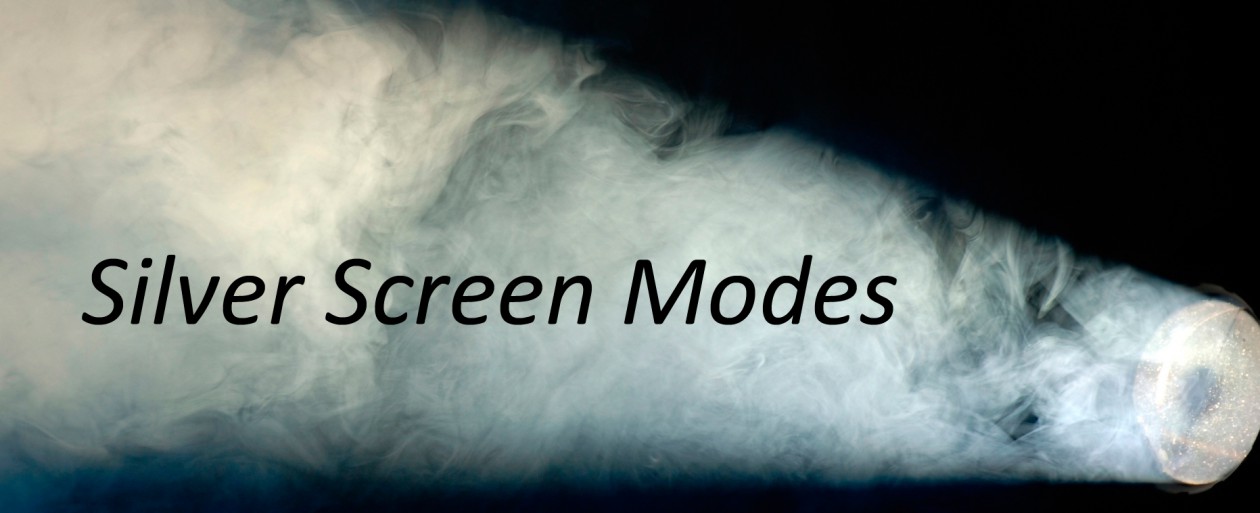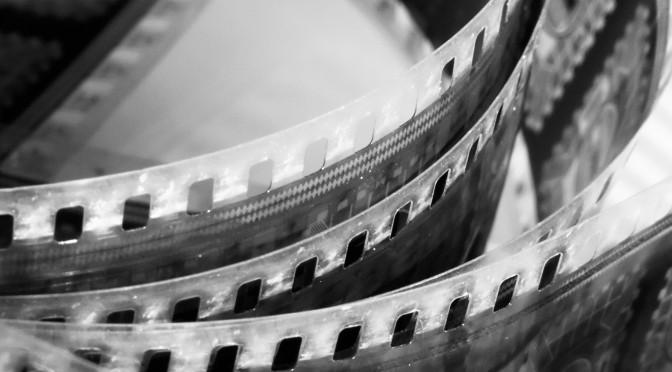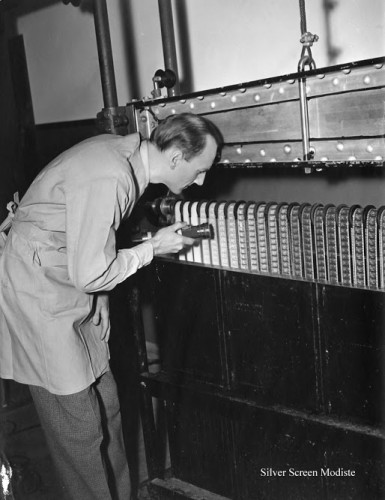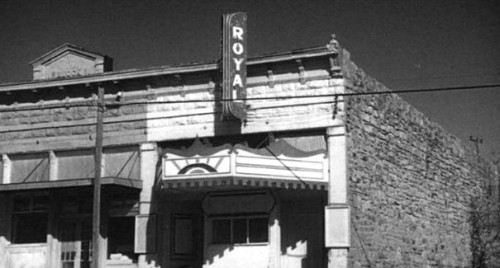That “films” will soon no longer be printed on film is is not really news, but that day is finally here. Paramount Pictures released its first major movie, The Wolf of Wall Street, entirely on digital in the U.S. Last December the release of Paramount’s Anchorman II was its last movie printed on 35mm film for distribution in the U.S. Paramount Pictures celebrated its 100th anniversary last year, and 35mm film has been the standard for all of that period. 20th Century-Fox and Disney will soon follow with all-digital distribution.
Movie theaters have been converting to 4k digital projectors for two or three years now, which cost from $60,000 to $150,000. The “films” arrive to them mailed as hard drives in cases, and in the near future will arrive over high-speed downloads. But according to the National Association of Theater Owners, some 4126 theater screens are still projecting film and most of these theaters probably can’t afford digital projectors.
With the studios using less and less film stock, film processors are hurting. The maker of unprocessed film, Eastman Kodak, has already filed for bankruptcy. Technicolor and Deluxe, rivals for decades in the processing of color film, finally decided to call a truce and divide up the remaining business between them. Recently Technicolor closed its processing lab in Glendale, California.
Digital filming has split many directors into two camps. James Cameron was a pioneer with Avatar. And films like The Hobbitt and Life of Pi relied on digital cameras. But film preservation advocate Martin Scorsese shot Hugo digitally. Christopher Nolan who directed The Dark Knight Rises, gathered many directors together to make a plea to save 35mm film. Quentin Tarantino says “…can’t stand digital. I hate that stuff.” And David O. Russell said, “Maybe I’m old fashioned, maybe I’m superstitious, maybe I’m romantic – I love film and it has a a magic quality, it has warmth.”
The benefits of digital to the studios are financial. A film print costs about $2000, a digital disk less than $100. Not to mention the difference in shipping costs. A 90 minute movie is usually over 8,000 feet of film. If you’ve ever looked through developed film stock, it’s amazing how many frames it takes to advance a scene. Modern reels of film come in 2000 ft. lengths, so that’s almost nine reels of film per movie, and many movies last longer than 90 minutes.
And on the shooting end of digital, you no longer have to stop “filming” to reload film magazines, you just keep on shooting. Only now the actors don’t get so many beaks.
Let’s look back in time at film and how it was handled.

In the old theater projection rooms, two projectors would be used so that when one projector ran out of its film the other carried on projecting the same movie. The rooms also had a place to splice films (at right) in case the film broke.
In the heyday of the studio system, where everything was done under the studio roof, film processing was an important part of the “factory.” In the 1930s when the photos below were taken at MGM, all the film was developed at the studio and shipped out across the country and across the world.
The industrial-looking machine above was used to develop film. The vats below contained developing and washing solutions, through which film looped continuously, going through one vat after the other until the film was developed. You can see the progression from left to right.
The technician below conduct quality control.
In the photo below taken at MGM in the 1930s, rows of men work in the automatic film printing room. Release prints for the movie theaters were made there at the rate of four million feet per week.
Film editing was not high-tech in the 1930s. Chester Schaefer at MGM edits and assembles a film prior to its screening and release.
Digitizing older film for preservation is one of the benefits of digital technology. In a recent study by the Library of Congress, it found that of the 11,000 silent films that were produced by the American movie industry between 1912 and 1929, only 14% (1,575) survive today in their original release condition, while another 11% survive in various imperfect formats.
The irony is that while digitizing film stock is a favored method used for the preservation of film, its long term life is an unknown. Film archivist David Pierce, who conducted the Library of Congress study, stated that, “Maintained under proper conditions – e.g.. cool, dry, vaults – film reels can last for hundreds of years. That kind of longevity has not been proven for digital copies yet.”
Digital format obsolescence is another issue, resulting in the continual need for digital content migration to new platforms and software. Digital creation is cheaper, but digital storage is, in the long run, more expensive.
As for those rural movie theaters. Many have started fund raising campaigns to buy digital projectors. For those that are unsuccessful, they will likely be playing Peter Bogdanovitch’s The Last Picture Show on their screens before long.
Views: 496










Do you know what happened to Glinda the good witch’s dress?
I don’t know what happened to that one. I don’t recall seeing it in the 1970 auction inventory list, nor have I seen it come up for sale since, to my recollection. Many costume did not survive. Often they were re-used and modified as to be unrecognizable. Maybe it be show up some day.
Firstly, a 90-minute movie (on 35mm 4-perf at 24fps) is 8,100 feet, not 10,000. Secondly, the rectifiers shown in that “theatre projection room, circa 1930s” are Irems, circa 1990s!
Thanks for the revision, Leo. Although the caption was 1950s, I’ll make the correction, certainly a big differance.
The thing about Anchorman 2 is no longer accurate. Transformers 4, Hercules and Teenage Mutant Ninja Turtles are some recent Paramount films that got 35mm prints in the US. Interstellar will as well.
Thanks for the update S Martin.
Hi Christian! Great post. I love the topic and all the old pictures that show how much was involved in the processing and projecting of film. I actually just co-directed a short documentary about the death of film projection that you might be interested in: https://vimeo.com/101235645
Thanks for your comment Jay. I enjoyed your short documentary – its a very interesting subject.
Hi Christian! I am one of the “save film” camp, although it looks like I backed a losing battle. I don’t like the digital look at all — I agree with David Russell … film has a certain look and soul to it that digital does not. I’ve seen some shows on my sister’s enormous TV that don’t look like movies at all — it’s kind of like looking through a window. It’s too real somehow. I know progress is inevitable and all that blather, but it isn’t always best, especially progress that is driven by profits only. I guess I agree with the warning that just because you CAN do something doesn’t mean you SHOULD. (Love that phrase!)
Greetings Becky! It does look like a losing battle, but the odd thing is that the studios are still releasing film prints for the foreign markets. You’d
think they would be make that an option here instead of having theaters close down. Maybe something will save film as an alternative, like the option of using black and white.
Time and technology inevitably move on, and economics is always a big driver. One potential upside is that as first-run goes digital, remaining “traditional” theaters may take on more older films and retrospectives, giving more people an opportunity to see classics on the big screen. My concern is not so much with the projection medium as with the art of movies itself. Video games have eclipsed movies with the 40 and under crowd for some time now. Film books occupy less and less space in even brick-and-mortar bookstores. General interest in movies, digital or film, is declining (even if the great crop of Oscar-nominated movies from last year is masking the decline somewhat).
Thanks for your comment Brian. The problem is the classics won’t be available on film either. Other than whatever older prints may be at hand.
For some of the theaters that specialize in showing classic film, this is what got them riled up about this issue in the first place. I do understand your general point though,
and I have sympathy with the move to newer formats and technologies. As you say, the “art” of the movies, or books or other media is sometimes better served in a
variety of methods, preferably where choice is still an option.
Ah, so sad, but that’s progress, I guess. There was a projectionists union hall in my town for a long time, but about 2 years ago it went away – along with the projectionist, I suppose.
Yes FlickChick, the projectionists are as endangered as film, probably more so. There was a job, like the train engineer, that we hardly ever
came in contact with or knew much about.
Well, that was fascinating and disturbing at the same time. Last fall I contributed to a fundraiser for San Francisco’s Balboa Theatre (a neighborhood theater), which faced closing if it was unable to convert to digital projection. Fortunately, the campaign was a success – but I hadn’t fully realized what was going on – that “the end of film” was so close at hand. Excellent piece, Christian.
Thanks for your comment Lady Eve. It is an eye opener. We take film for granted, as we take digital projection as a new enhancement of “film” projection. But for those rural and small town theaters it’s another story. I hope it won’t all mean such a bad end.